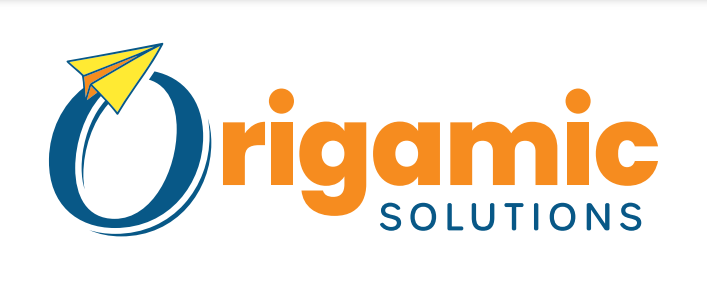AI That Adds Measurable Value to Your Business: Understanding ROI Metrics

For small and medium-sized businesses (SMBs), integrating artificial intelligence (AI) into daily operations can feel overwhelming. Limited resources, tight budgets, and the pressure to achieve meaningful results present significant challenges. As trusted advisors dedicated to helping clients grow and thrive, I understand these hurdles and know how crucial it is to ensure every investment delivers real value. Success isn’t just about adopting the newest technology; it’s about strategically aligning AI with your business goals to streamline processes, boost efficiency, and achieve measurable growth.
In this blog series, I’ll guide you through actionable strategies and metrics to help SMBs like yours evaluate the return on investment (ROI) of AI implementation. This journey is designed to provide practical insights to make your AI adoption both effective and sustainable. Your success is my priority, and I’m here to help you make AI work for your business.
When it comes to implementing AI, knowing what to measure is fundamental to unlocking its potential. The true success of your AI initiatives lies in their ability to create tangible value—whether that’s through cost savings, increased revenue, or enhanced customer satisfaction. However, measuring AI’s ROI can feel like uncharted waters for many SMBs.
To navigate this, it’s essential to take a structured approach, zeroing in on metrics that deliver clear, measurable outcomes. Below, I’ll outline the critical areas to consider when evaluating the ROI of AI. These benchmarks will not only help you assess current successes but will also pave the way for sustainable growth and future innovation.
In previous blogs, I’ve touched on four key steps to prepare for your AI journey:
-
Focus on strategy over technology
-
Define measurable outcomes
-
Address data readiness for AI
-
Start planning employee adoption immediately
These principles will come into play as we evaluate your ROI throughout this series. In this first blog, I’ll highlight the areas of measurement critical to ROI evaluation, with each of these topics explored in greater detail in future posts.
You can't track your journey unless you've determined your destination
The first and perhaps most important step is defining success. Success measurements are built around clearly defined objectives. Have you established the objectives for your AI journey? Are you aiming for cost savings, increased revenue, improved customer satisfaction, operational efficiency, or a combination of these? Setting these objectives can be challenging, but they are vital. In my next blog, I’ll share techniques and principles for defining AI success.
Here’s a sneak peek of the key measurement areas we’ll explore in this series:
- Hard ROI Metrics: These quantifiable, financial measures demonstrate the direct economic impact of AI initiatives. Examples include:
- Cost Savings: Reductions in operational costs, such as automation replacing manual tasks.
- Revenue Growth: Increases in sales or market share directly attributed to AI.
- Productivity Gains: Improvements in employee efficiency or faster task completion.
- Soft ROI Metrics: These qualitative measures capture broader, non-financial benefits, such as:
- Customer Experience: Improvements in Net Promoter Scores (NPS) or customer retention rates.
- Employee Satisfaction: Enhanced job satisfaction or reduced burnout through AI tools.
- Innovation Impact: Introduction of new products or services enabled by AI.
- Time-to-Value: How quickly the benefits of an AI initiative become evident and impactful, ensuring results within a reasonable timeframe.
- Data Quality and Utilization: The accuracy, relevance, and effective use of data to ensure reliable insights and maximize the value of AI-driven solutions. After all, "good data" builds confidence in AI responses.
- Scalability and Adaptability: The ability of an AI solution to grow with your business and adapt to changing goals or conditions.
- Risk Mitigation: How AI helps reduce risks, such as detecting fraud or ensuring compliance.
Good data increases AI confidence
Achieving meaningful ROI in these areas requires:
- A well-thought-out plan.
- Identified data sources.
- Clear targets.
- Regular review cycles.
I hope this introduction gives you a sense of what’s to come in the series. Each future blog will delve deeper into these areas, providing practical advice and guidance on implementing ROI metrics effectively.
Finally, I always recommend assessing your organization’s readiness for AI before beginning your journey. Origamic Solutions’ free readiness assessment is a great starting point to determine where you are and where you need to go. Let’s get started!
 Jim Blizzard Principal |
Origamic Solutions' Practical AI Practice is dedicated to helping small and medium-sized businesses apply artificial intelligence in safe and productive ways. By prioritizing operational integration over technical complexities, Practical AI Practice enhances decision-making processes, boosts efficiency, and increases productivity. Through Practical AI Practice, we empower our clients to strategically leverage AI, enabling them to tackle complex challenges, scale their operations, and achieve their broader goals. |

|


.png?width=352&name=The%20Why%20Before%20the%20What%20(4).png)
.png?width=352&name=Blog%20Headers%20(1).png)
